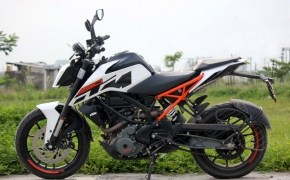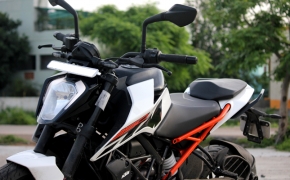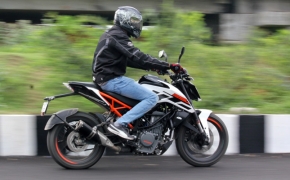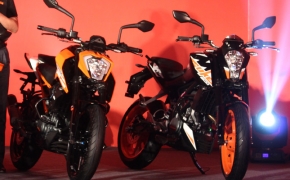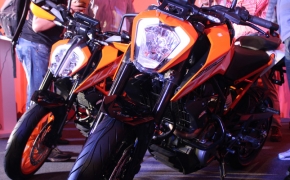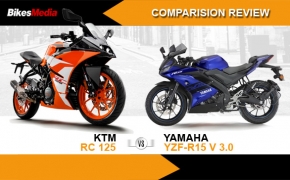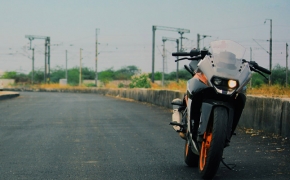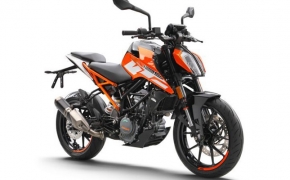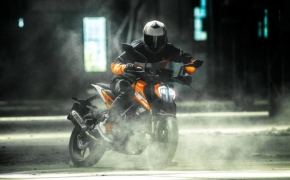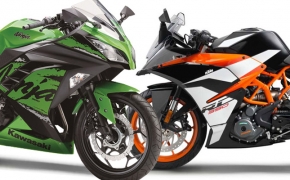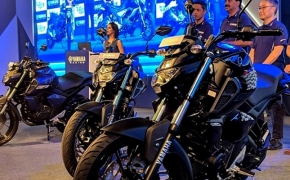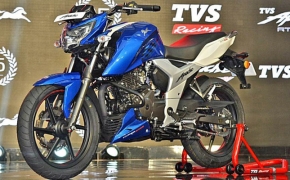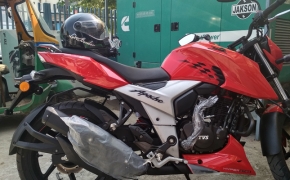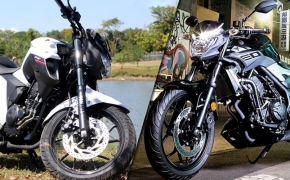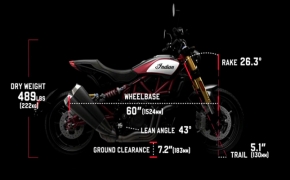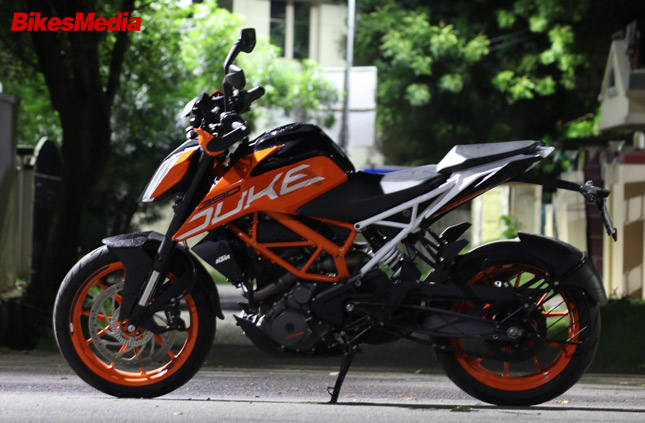 The new 2017 KTM Dukes come with a new chassis which KTM is calling the “bolted sub-frame”. It is typically a frame connected to a frame by either welding, or in the case of KTMs bolted. The concept is pretty simple, you divide the individual frame into two units, and connect them to each other with bolts, yet they remain two separate entities. KTM has provided different colors to the chassis to highlight the different frames from each other. But does it have any real world implications to the bike and its ride quality as a whole? Let’s have a look, shall we!
The new 2017 KTM Dukes come with a new chassis which KTM is calling the “bolted sub-frame”. It is typically a frame connected to a frame by either welding, or in the case of KTMs bolted. The concept is pretty simple, you divide the individual frame into two units, and connect them to each other with bolts, yet they remain two separate entities. KTM has provided different colors to the chassis to highlight the different frames from each other. But does it have any real world implications to the bike and its ride quality as a whole? Let’s have a look, shall we!With the two different frames put together, the load bearing capacity of the chassis does receive a boost as the stress is not transferred from one frame to the other instead of all the stress being on a single frame. This allows the bike to not only handle heavy loads and bad terrain well, but also reduces the chances of stress failure as in case of any frame damage, the secondary frame can handle the load to take the bike to the nearest garage.
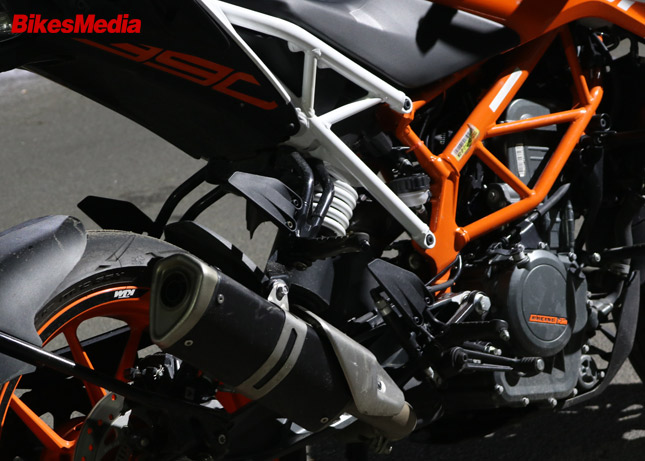 Now, the argument here is such that earlier it would be a single frame and now the same frame is split into two, then how is it that the load and stress bearing capacity is higher when it should practically be the same? It is correct, practically it should be the same, but then in that case every member of the chassis would undergo a lower stress load and hence the design and make of the chassis was design to suit that amount of stress. In the bolted sub-frame, the chassis units are designed to handle higher stress levels, thus resulting in an improved chassis performance of the bike.
Now, the argument here is such that earlier it would be a single frame and now the same frame is split into two, then how is it that the load and stress bearing capacity is higher when it should practically be the same? It is correct, practically it should be the same, but then in that case every member of the chassis would undergo a lower stress load and hence the design and make of the chassis was design to suit that amount of stress. In the bolted sub-frame, the chassis units are designed to handle higher stress levels, thus resulting in an improved chassis performance of the bike.Furthermore, as Indians we also tend to notice this thing that being two different chassis units, if any of the unit suffers damage, then the cost of replacement/repair of the chassis is also significantly lower as compared to the previous times when the cost of repair/replacement of the entire chassis was substantially higher.
RELATED ARTICLE: Motorcycle Trellis Frame- All You Need To Know
Coming to the on road performance effects of the bolted sub-frame, with this type of a chassis, the bikes now are more stable on the road as the rear swingarm and suspension now are connected to the sub-frame only. Hence the stress from the shocks are absorbed by the sub-frame while the primary frame which houses the engine and front suspension do not bear much of the grunt. The reverse of this is also applicable which makes it possible for bikes to now have differential suspension setup.
RELATED ARTICLE: Motorcycle Perimeter Frame- All You Need To Know
The front and the rear can have worlds opposite suspension setting and yet there would not be an issue as the chassis being different units, the stability of the bike will never be affected. The rear can be as soft as the rider would like to handle the bad roads, while the front can be harder to aid in the braking and maneuverability of the bike.
And if that was not all, the cornering ability of the bike is also boosted with the bolted sub-frame owing to the differential load handling capability. During lean, the load from the swingarm is transmitted to the suspension and the chassis which affects the handling of the bike. But with the new bolted sub-frame, the stress is limited to the sub-frame and hence the rest of the bike’s handling is unaffected.
RELATED ARTICLE: Motorcycle Diamond Frame- All You Need To Know
Now that is more than enough reasons to justify the use of the bolted sub-frame by KTM in their new Duke line up and the added advantage of a minimal price hike makes the bikes quite an enticing offer. Though for other manufacturers, this is something they also might want to look at to improve the handling of the bikes and offer the customers a much more fun bike to ride.
By: Pratik Patole












